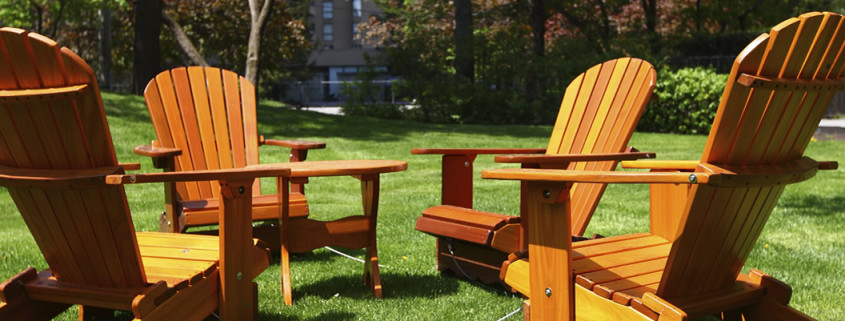Make Your Lawn Clean and Green with Quality Landscaping
How blissful it would be to return home and sit and relax in one’s own lawn with a cup of coffee. By this time, you must have already started imagining yourselves like this. Well, you can also enjoy it; it just requires putting in a little effort to prepare a lush green and beautiful lawn. Landscaping in Ottawa is important after every snow season. For this, a proper method must be implemented for regular lawn maintenance. This helps in maintaining a greener, cleaner as well as a lawn that can withstand snow, heavy rain, pests, weeds, foot traffic, and even drought conditions.
When landscaping in Ottawa, there are some primary steps which must be followed in order to maintain a lush green lawn, like regular mowing, irrigation, aeration, weeding, fertilizing, and over-seeding. Also, there is a monthly schedule for lawn maintenance that will effectively improve and enhance the quality of the grass of your lawn. Hence, it becomes essential to follow this monthly plan if you wish to have a beautiful and greener lawn.
March – snowmelt
Once the snow has been melted, the first step you need to do is to clear away all the debris from the lawn. Also, search for any dead patches and find out the cause behind that (insects, or any disease).
April
Start raking the lawn in order to breakdown the leftover snow while also removing the thatch. Look for the areas which have been destroyed by salt, aerate and put gypsum over it, as well as water it deeply in order to eliminate the salt. The dead patches can be reseeded while poor areas must be over-seeded with a mixture of grass seed.
May
Aerate and de-thatch the lawn. Use compost to top-dress the lawn. Preserve the lawn at a mowing height of 7-8 cm, and begin mowing once the grass dries up. Water the lawn 1”inch deep in between every 7-10 days. Apply corn gluten meal at the end of the month, but don’t use on the seeded patches.
June
Decrease mowing as grass starts growing slowly. Check the lawn for any pests or diseases. If the weather is hot and dry, keep watering the lawn. Keep weeding, if necessary or apply corn gluten meal.
July
Conserve your lawn at a mowing height of 7-8 cm. Look for any pests or diseases. Provide water till 0.5 cm deep frequently or let it turn brown, and don’t mow until it recuperates. Continue weeding, and cut the grass only if necessary.
August
Let the grass go dormant, and continue watering it 2.5 cm deep in between every 7-10 days, if needed. Continue weeding the lawn. Also, make sure to uphold the mowing height at 7-8 cm.
September
This is the perfect period to aerate, dethatch, and top-dress the lawn. Re-seed or over-seed the damaged areas. Water 2.5cm deep early in the morning, if needed, and check if the areas are infected with pests or diseases. It is important to remove any leaves from the lawn as it can cause damage if they remain on the lawn. You can also apply corn gluten meal if there is no seeding.
October
Keep checking for any insects or diseases on the lawn, and make sure to cut any leaves that are fallen on the lawn by using a mower. Apply gypsum to the areas that get affected by salt. Also, continue weeding and raking up the accumulated leaves.




Leave a Reply
Want to join the discussion?Feel free to contribute!